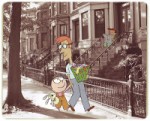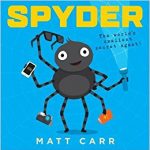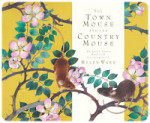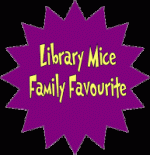There is little or no need at all to introduce Meg Rosoff. Her first novel, How I Live Now, was published to a high acclaim in 2004 and went on to win the Guardian Children’s Book Prize in 2004 and the Branford Boase Award in 2005. It remains one of the best written “teen book” I have ever come across. Her following book, Just in Case, won the 2007 Carnegie Medal. Her third book, What I Was, was shortlisted for both the Carnegie Award and the Costa Prize. So as you can see, quite a few credentials! But Meg Rosoff is a marmite-kind of author; you either love or hate her writing. I love it, so it was with a lot of trepidation that I was awaiting her new offering (especially as I had been slightly disappointed by What I Was).
Pell Ridley lives in Nomansland, a little village stuck between Wiltshire and Hampshire, at the edge of the New Forest. Her life is miserable. Her drunk father (a preacher) makes her mother’s life hell and works his daughters to death. There is little food on the table and too many children in the house to share it with. Pell’s only passion is horses, about which she knows a lot. She cares for them, works with them, talks to them. But even her love of horses does not make her life any more bearable and at dawn on the day of her wedding to her childhood friend, unable to face the life that is ahead of her, she leaves the family home with her horse Jack and, despite Pell’s reservations, her mute brother Bean. She takes the road to Salisbury, where she hopes to find work at the horse fair. But the road to her new life is paved with sorrow, secrets and incredible encounters.
Although it took me a couple of goes to get into it, I have to say it was a real pleasure reading this book. There is no denying it, Rosoff is one clever writer; she successfully adapated her writing style to suit the style of the Victorian novel. She capturesVictorian country life in all its misery (she wanted to write in a style close to Hardy’s and we can really see it here – it’s a lot of doom, doom, doom!), and yet in all its beauty too (for example the way Pell is in tune with the horses and the way Dogman is in tune with the countryside). The story is particularly cleverly written; we learn things through the character Esther which Pell never gets to know and yet which unlocks a lot about Pell’s past and how both women’s lives are entwined. Esther was an incredible character; reckless and heartless and yet loving in the most peculiar way. I was left not knowing whether I should despise or admire her! But the highlight of this book remains Pell; what a girl! It’s great to read a book with such a strong female character, especially a teenager. She just gets on with whatever life throws at her and is not worried about what people might think of her. Her approach to life might look like it is devoid of feeling to some readers (particularly her relationship to Dogman and how it evolves without any real emotion being shown) but it did not bother me. I suppose during those times poor people especially didn’t have much time to think about love and feelings so Pell would have probably accepted the new situation and “got on” with it.
This was a great read, and although How I Live Now remains my favourite, this is now a close second.






Agreed, Library Mice. This is a real return to form for Ms Rosoff and a book that I hope will be around for a long time. There is something unflinching in the portrayal of the lot of the rural poor. The Hardy-esque qualities of the book do not seem in the least bit affected. While this is not a long book it still able to do a lot of things very convincingly.
And Pell is a character strong enough, as you highlight, to confront it all.